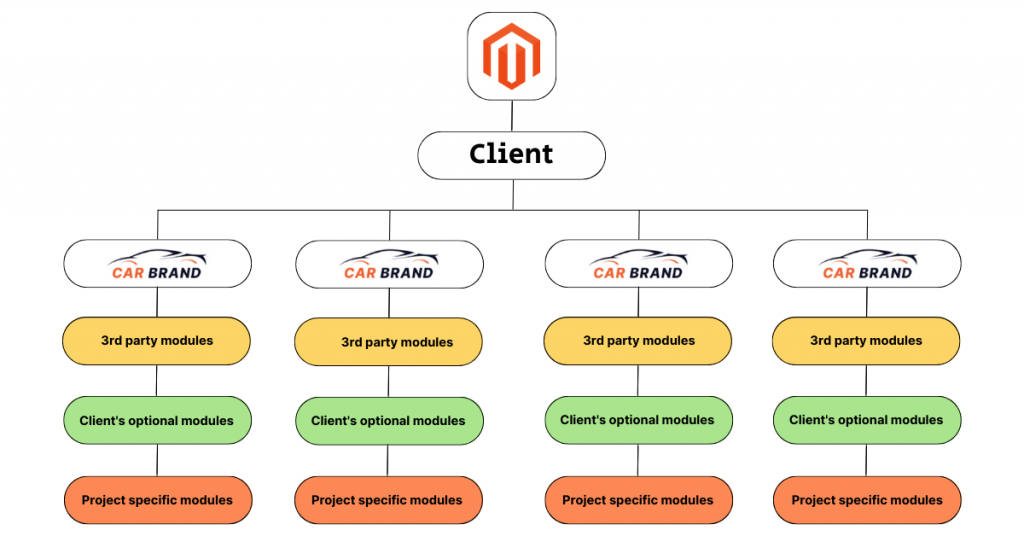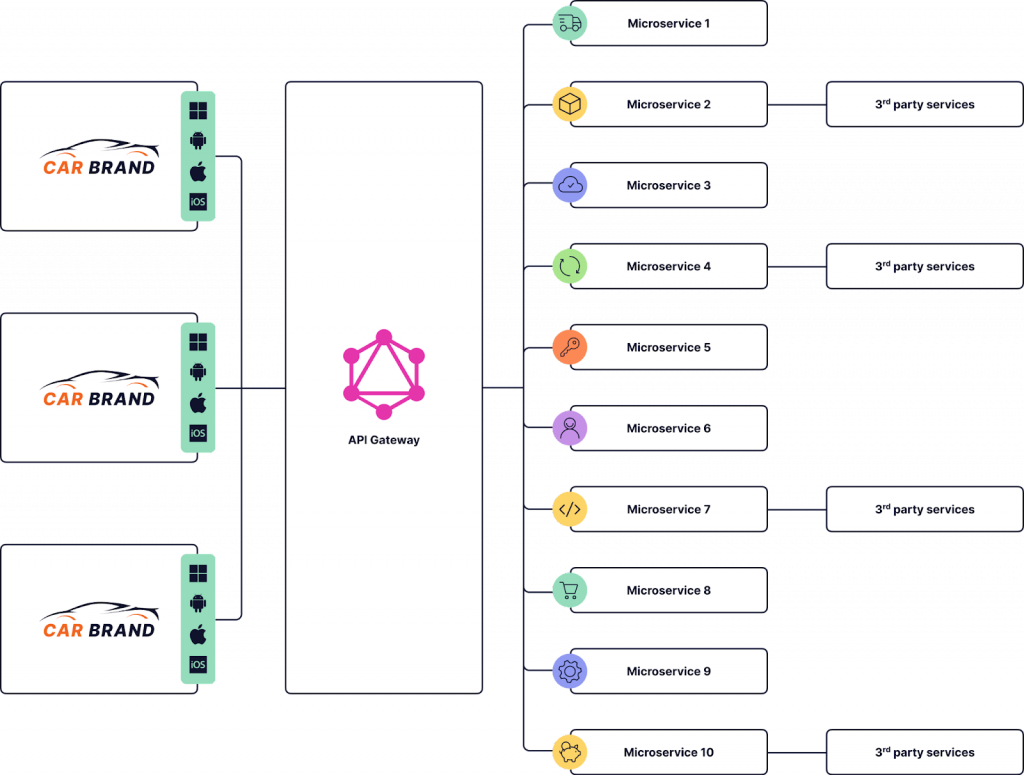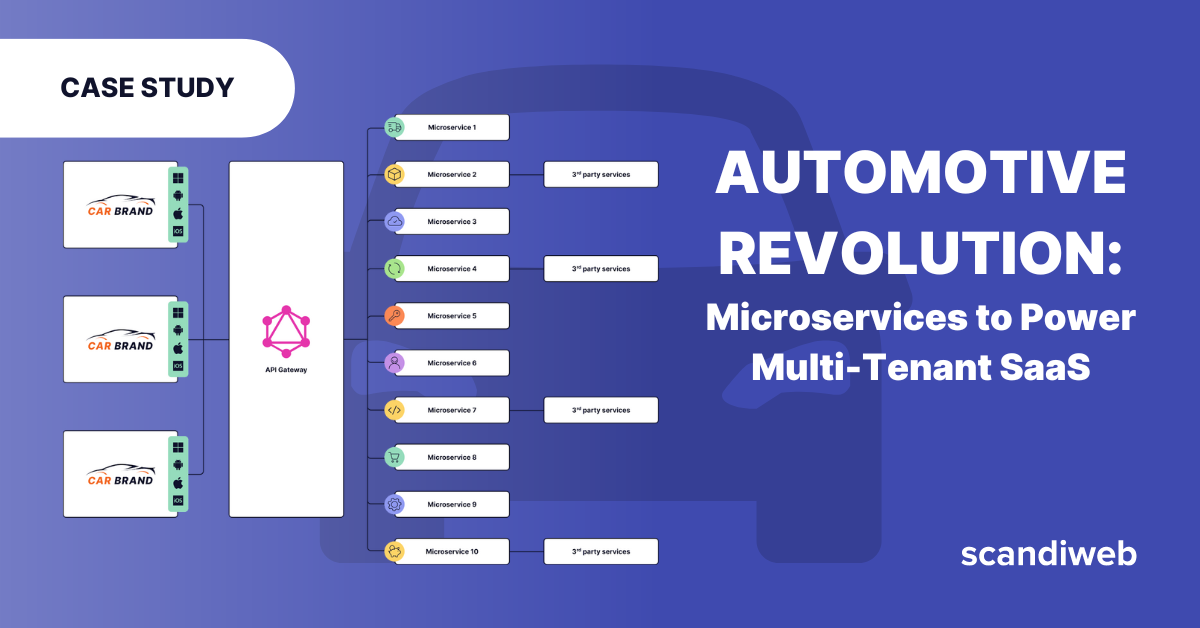With scandiweb by their side, our client broke new territory in online car sales back in 2016, launching the first-ever digital platform for buying premium vehicles fully online. After that, the platform gradually evolved into an end-to-end multi-channel car-buying platform that powers some of the world’s most innovative dealers and auto manufacturers. Today, it has become a multi-tenanted SaaS powered by a microservices architecture.
Background
Our client operated within the traditional customer and sales representative model for many years—until an idea arose of how car retailing could differ. They found a partner in scandiweb and became the first brand to offer complete digitalization of vehicle purchase and related services. From that point on, the way people buy cars changed.
The client’s initial platform was built on Magento (Adobe Commerce). It provided full access and transparency of every step of the car-purchase journey at any time, from pricing, leasing, and real-time part exchange evaluation to the selection, configuration, and brand new car at the customer’s door. The first car was sold on opening day.
From there, our client’s business grew, as other car retail and manufacturing businesses were already lining up for the upcoming years. The initial platform evolved into an enterprise-grade SaaS product for the automotive sector.
Architecture: before
The platform integrated all aspects of the car-buying journey, allowing customers to access the platform online, even on a phone or tablet, or use it in-store, where it is displayed at a digital kiosk, ensuring a seamless experience and generating confidence in the purchase decision.
It used a four-step sequence:
- Budget—set the payment plan and choose finance providers, deposit, monthly payments, term length, and annual mileage;
- Trade—get a part exchange price on your current car in 9 seconds and trade in your old car seamlessly;
- Choose—compare models, lead times, and prices by filtering through real-time stock availability down to the last detail or configure something new, then book a test drive;
- Checkout—continue the process on your own time, save checkout, and proceed with a fully digitalized document exchange in My Account.
The idea was to have the power of driving the platform to shop for a car in the customers’ hands 24/7. That means real-time fulfillment updates, part exchange evaluation, and leasing offers that suit any budget to transact the whole journey end-to-end, with the new car getting delivered to the customer instead of visiting the dealership, filling in forms, and communicating with the bank.
Over the years, other well-known manufacturers and automotive retailers were onboarded and run on the developed digital platform.
The story, however, does not end here. In fact, this is where it picks up speed.
Challenge
Because every car brand build is very customized, that results in maintenance challenges. The single-tenanted monolithic approach did not allow our client to move as quickly and efficiently in onboarding new clients.
The key pillars of automotive retail, while universally the same, differ from client to client, so the solution needed to be configured per customer and hosted separately.

Solution
To migrate away from the monolithic Magento structure, we facilitated our client’s digital transformation towards enterprise-grade SaaS with an architecture running on 20+ microservices that power multiple headless storefronts through GraphQL API gateway.
Architecture: after
With the new microservices architecture, we leverage a multi-tenanted approach that allows them to build independent services with a single purpose only, usable across all projects. It is the same unparalleled eCommerce but with a solution that gets to the market quicker while not compromising any integrations and custom modules.
A separate team manages each standalone service, enabling fast and frequent development and deployment. Examples of microservices include Data ingestion, Product Information Management, Order Management, Customer Data Management, Vehicle finance, and more.

The following key layers are available:
- Front-end application—user-facing storefronts running on Next.js;
- Apollo Federation GraphQL gateway—public-facing single Apollo GraphQL entry point for all instances and public-closed separate Apollo GraphQL server for each service which contains separate scheme, resolvers, and data sources;
- Services—custom-made or 3rd party services for a particular purpose. The service data is exposed to Apollo federation via a bespoke Apollo server, 3rd party tools like GraphQL or REST. Services are powered by various technologies depending on specific service needs (PHP / NodeJS);
- ETL (Extract, Transform, Load) layer—Local and Global ETL, abstract ingestion with different adapters for different data sources, clients, and sales channels;
- 3rd party integrations—data sources from which services or ETL layer ingest the data or submit requests.
What is next
According to Google Search Trends, ~60% of buyers under 45 are interested in contactless services and will likely purchase their next car online. At the same time, car manufacturers are challenged by innovative EV brands like Tesla that sell directly to their customers, who can buy a car in under ten clicks.
It poses a significant challenge to our client’s platform to accelerate the digital transformation of automotive retail across the globe.
Are you ready to innovate and disrupt your own industry? Let us know—we’ll be happy to help you bring any idea to life, no matter the challenge!


Share on: